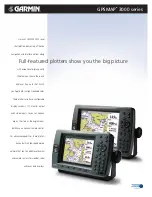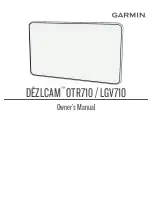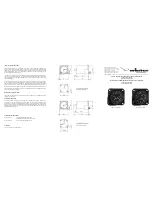
190-00592-06 Rev. A
Garmin G1000 Pilot’s Guide for the Diamond DA40/40F
311
HAZARD AVOIDANCE
SY
STEM
O
VER
VIEW
FLIGHT
INSTRUMENTS
EIS
AUDIO P
ANEL
& CNS
FLIGHT
MANA
GEMENT
HAZARD
AV
OID
ANCE
AFCS
ADDITIONAL
FEA
TURES
APPENDICES
INDEX
6.3 TERRAIN PROXIMITY
WARNING:
Do not use Terrain Proximity information for primary terrain avoidance. Terrain Proximity is
intended only to enhance situational awareness.
NOTE:
Terrain data is not displayed when the aircraft latitude is greater than 75
°
North or 60
°
South.
G1000 Terrain Proximity is a terrain awareness system that does not comply with TSO-C151b certification
standards. It increases situational awareness and aids in reducing controlled flight into terrain (CFIT). Do not
confuse Terrain Proximity with Terrain Awareness and Warning System (TAWS). TAWS is more sophisticated
and robust, and it is TSO-C151b certified. Terrain Proximity does not provide warning annunciations or voice
alerts. It only provides color indications on map displays when terrain and obstacles are within a certain altitude
threshold from the aircraft. Although the terrain and obstacle color map displays are the same, TAWS uses more
sophisticated algorithms to assess aircraft distance from terrain and obstacles.
Terrain Proximity requires the following components to operate properly:
• Valid 3-D GPS position
• Valid terrain/obstacle database
Terrain Proximity displays altitudes of terrain and obstructions relative to the aircraft position and altitude with
reference to a database that may contain inaccuracies. Terrain and obstructions are shown only if they are in the
database. Terrain and obstacle information should be used as an aid to situational awareness. They should never
be used to navigate or maneuver around terrain.
Note that all obstructions may not be available in the terrain and obstacle database. No terrain and obstacle
information is shown without a valid 3-D GPS position.
The G1000 GPS receiver provides the horizontal position and altitude. GPS altitude is derived from satellite
position. GPS altitude is then converted to a mean sea level (MSL)-based altitude (GPS-MSL altitude) and is used
to determine terrain and obstacle proximity. GPS-MSL altitude accuracy is affected by satellite geometry, but is
not subject to variations in pressure and temperature that normally affect pressure altitude sensors. GPS-MSL
altitude does not require local altimeter settings to determine MSL altitude. It is a widely-used MSL altitude
source.
Terrain and obstacle databases are referenced to MSL. Using the GPS position and altitude, the Terrain Proximity
feature portrays a 2-D picture of the surrounding terrain and obstacles relative to the position and altitude of the
aircraft. GPS position and GPS-MSL altitude are used to calculate and predict the aircraft’s flight path in relation
to the surrounding terrain and obstacles. In this way, the pilot can view predicted dangerous terrain and obstacle
conditions.
DISPLAYING TERRAIN PROXIMITY DATA
The symbols and colors in Figure 6-51 and Table 6-4 are used to represent obstacles and aircraft altitude
when the Terrain Proximity Page is selected for display. Terrain Proximity uses black, yellow, and red to
represent terrain information relative to aircraft altitude. The color of each obstacle is associated with the
altitude of the aircraft.
Summary of Contents for Diamond DA40
Page 1: ...System Software 0321 20 or later G1000 Integrated Flight Deck Pilot s Guide...
Page 2: ......
Page 537: ......
















































